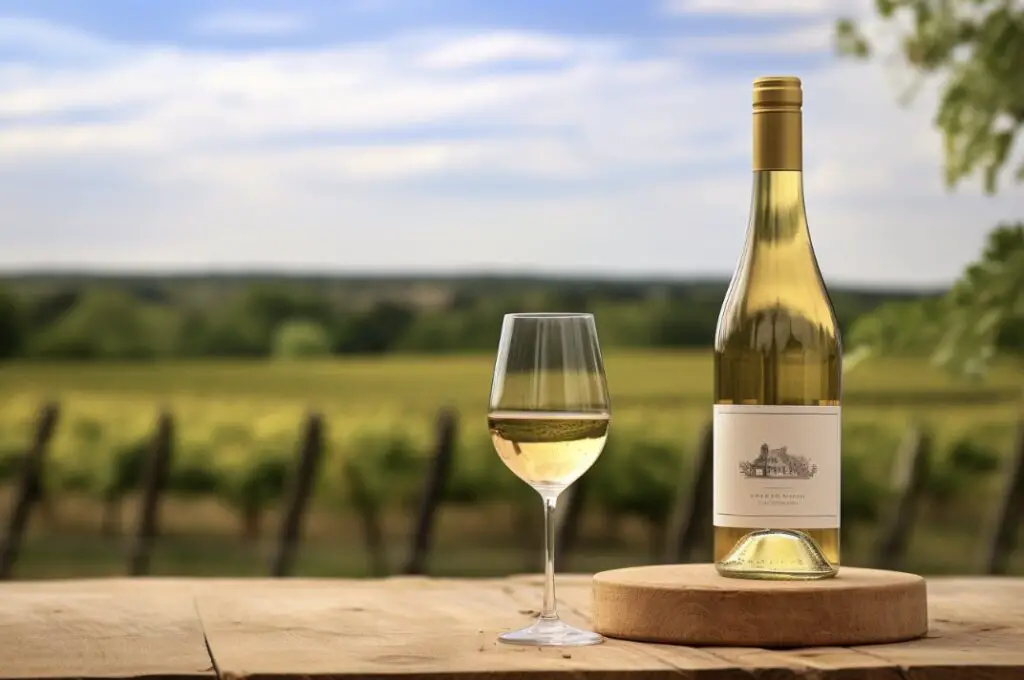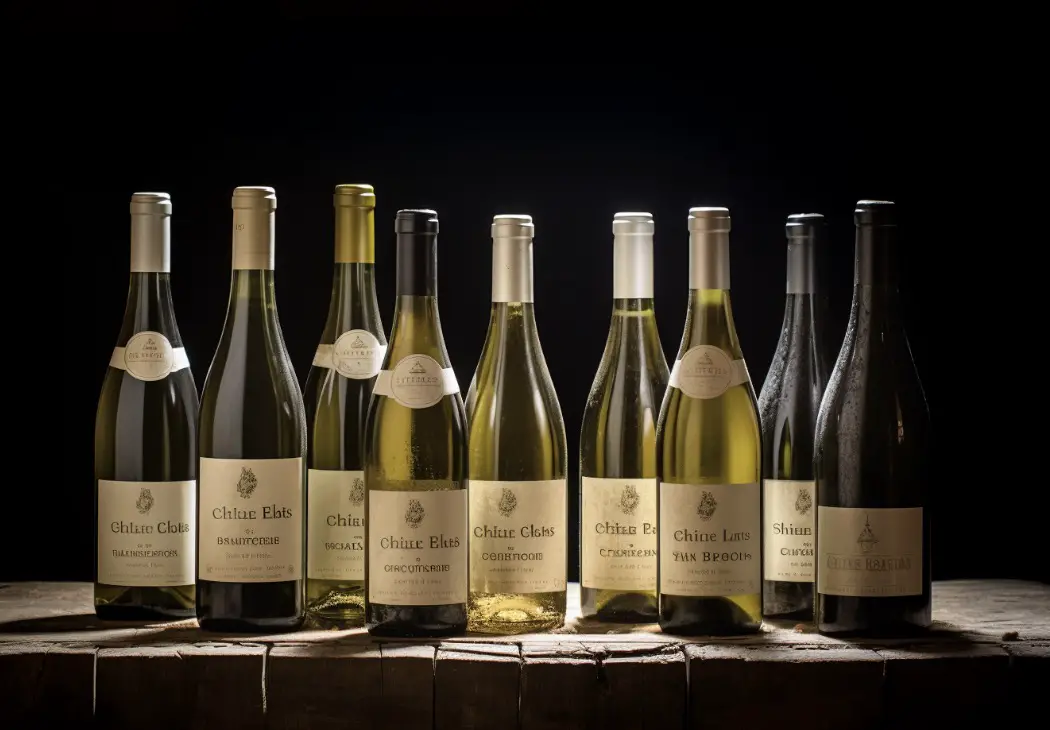Chablis, a region in Burgundy, France, is known for producing some of the most elegant and sought-after chardonnays.
Characterized by its crisp acidity, minerality, and citrus flavors, Chablis has become a benchmark for chardonnay lovers worldwide.
However, if you’re looking to explore other wines that offer a similar profile to Chablis, you’re in for a treat! In this post, we’ll dive into five fantastic alternatives to Chablis that you’ll want to try:
1. Saint-Aubin (Burgundy, France)
2. Petit Chablis (Burgundy, France)
3. Sancerre (Loire Valley, France)
4. Gavi (Piedmont, Italy)
5. Chardonnay from Sonoma Coast (California, USA)
1. Saint-Aubin (Burgundy, France)
Located just south of Chablis, the Saint-Aubin appellation is another excellent source of chardonnay from the Burgundy region.
Wines from Saint-Aubin share many similarities with Chablis, including a focus on mineral-driven flavors, bright acidity, and a leaner style compared to many other white Burgundies.
Tasting Profile
Saint-Aubin chardonnays are marked by their lively acidity and pronounced minerality, reminiscent of Chablis. However, these wines often showcase a slightly richer texture and more pronounced fruit flavors, such as green apple, lemon, and white peach. Additionally, you might find some notes of white flowers and wet stone on the nose.
Food Pairings
Like Chablis, Saint-Aubin chardonnays are incredibly versatile and food-friendly. They pair exceptionally well with seafood dishes, such as grilled shrimp, scallops, and oysters.
Their bright acidity also makes them an excellent choice for pairing with creamy pasta dishes or chicken in a white wine sauce.
2. Petit Chablis (Burgundy, France)
Petit Chablis is a sub-appellation within the Chablis region itself, producing wines that offer a more approachable and affordable alternative to the more prestigious Chablis wines. Made from the same chardonnay grape variety, Petit Chablis wines share many similarities with their more famous counterparts.
Tasting Profile
Petit Chablis wines are known for their fresh, fruity, and uncomplicated character. While they may not have the same depth and complexity as their Chablis counterparts, they still offer a delightful combination of crisp acidity, citrus flavors, and subtle minerality. Expect notes of green apple, lemon zest, and a touch of flintiness.
Food Pairings
Petit Chablis wines are perfect for a casual meal or as an aperitif. They pair well with a variety of foods, including fresh salads, goat cheese, and light seafood dishes like ceviche or sushi.
Their bright acidity and clean finish also make them a great match for dishes with a hint of spice, such as Thai green curry or fish tacos.
3. Sancerre (Loire Valley, France)
While Sancerre is primarily known for its sauvignon blanc wines, the region also produces some outstanding chardonnays. These wines offer a unique alternative to Chablis, showcasing the minerality and acidity of the region with a distinctively different flavor profile.
Tasting Profile
Sancerre chardonnays are characterized by their bright acidity, minerality, and subtle, yet complex fruit flavors. Expect notes of lemon, green apple, and white peach, along with a hint of tropical fruit and herbal undertones. The wines often have a slightly creamy texture, thanks to the region’s limestone-rich soils, giving them a unique mouthfeel compared to Chablis.
Food Pairings
Sancerre chardonnays are extremely versatile when it comes to food pairings. Their bright acidity and mineral-driven flavors make them an excellent match for shellfish, such as oysters, clams, or mussels. Additionally, they work well with poultry dishes, like roast chicken or turkey, and can even stand up to richer, cream-based sauces.
4. Gavi (Piedmont, Italy)
Although not made from chardonnay, Gavi wines from the Piedmont region of Italy offer a similar taste profile to Chablis, with their focus on minerality, acidity, and restrained fruit flavors. Made from the cortese grape variety, Gavi is an excellent alternative for those looking to explore wines outside of France.

Tasting Profile
Gavi wines are known for their crisp acidity, mineral-driven flavors, and subtle fruitiness. Typical tasting notes include green apple, citrus, and white peach, along with a refreshing hint of salinity and wet stone. Some Gavi wines also display a slight floral and almond character, adding to their complexity.
Food Pairings
Gavi wines are a natural match for seafood, thanks to their bright acidity and saline character. They pair exceptionally well with dishes like seafood risotto, grilled fish, or even sushi.
Additionally, their acidity and clean finish make them a great option for pairing with lighter fare, such as salads, antipasti, or simple pasta dishes.
5. Chardonnay from Sonoma Coast (California, USA)
While California chardonnays are often associated with rich, buttery flavors and a full-bodied profile, the Sonoma Coast appellation produces a style of chardonnay that is more reminiscent of Chablis.
These wines focus on acidity, minerality, and restrained fruit flavors, making them a fantastic alternative for those looking to explore New World wines.
Tasting Profile
Chardonnays from the Sonoma Coast exhibit a lively acidity, bright citrus and green apple flavors, and a distinct minerality, not unlike Chablis. However, these wines often showcase a slightly riper fruit profile, with notes of pineapple, melon, and pear. You might also find a subtle influence of oak, contributing to a richer, creamier texture.
Food Pairings
Sonoma Coast chardonnays are incredibly versatile when it comes to food pairings. They shine alongside seafood dishes, like grilled salmon, crab cakes, or lobster bisque. Their acidity and minerality also make them an excellent choice for pairing with creamy pasta dishes, roasted chicken, or even a simple cheese platter.
Why do I like Chablis but not other Chardonnays?
Chablis tends to have a distinct character with high acidity, mineral notes, and a crisp, refreshing taste.
If you enjoy Chablis but not other Chardonnays, it could be due to differences in winemaking techniques, terroir, or aging processes.
Chablis often undergoes stainless steel fermentation and minimal oak aging, resulting in a more pure expression of the grape’s flavors.
On the other hand, Chardonnays from other regions may be subjected to more oak influence, leading to a richer, buttery, or tropical fruit profile that you may not prefer.
Conclusion and Personal Recommendation
In conclusion, there are several fantastic alternatives to Chablis that offer a similar taste profile and food-pairing versatility. From the mineral-driven chardonnays of Saint-Aubin and Sancerre to the refreshing Gavi wines of Italy and the elegant Sonoma Coast chardonnays, there’s a world of wines to explore for Chablis lovers.
Personally, I find the Saint-Aubin chardonnays to be the closest in style and character to Chablis, offering a beautiful balance between minerality, acidity, and fruit flavors. However, I encourage you to taste and explore each of these alternatives to find your own personal favorite. Cheers!
FAQs
Is A Chardonnay the same as a Chablis?
No, a Chardonnay is not the same as a Chablis. Chardonnay is a grape variety, while Chablis is a specific region in France known for producing Chardonnay wines. Chablis wines are typically unoaked and have a distinct mineral character, whereas Chardonnay wines from other regions can vary in style depending on winemaking techniques.
What white wine is similar to Chablis?
A white wine similar to Chablis would be a crisp and mineral-driven wine with high acidity. Some alternatives to Chablis could include wines from the nearby regions of Burgundy, such as Petit Chablis or wines from the Mâconnais region. Additionally, wines made from the grape variety Aligoté can also offer a similar style to Chablis.
Is Chablis a type of Chardonnay?
Yes, Chablis is a type of Chardonnay. Chablis is a white wine region in France that exclusively produces Chardonnay wines. The cool climate and unique soil in Chablis impart distinct characteristics to the Chardonnay grapes grown there, resulting in crisp, mineral-driven wines.
Is Chardonnay and Chablis the same?
No, Chardonnay and Chablis are not the same. Chardonnay is a white grape variety that is grown in many wine regions around the world. Chablis, on the other hand, is a specific wine region in Burgundy, France, known for producing crisp and mineral-driven white wines primarily from the Chardonnay grape. While Chablis is made from Chardonnay grapes, not all Chardonnay wines are considered Chablis.
What is Chablis comparable to?
Chablis is often compared to white Burgundy wines due to its similar characteristics and production methods. It shares some similarities with other cool-climate Chardonnays, but Chablis is known for its unique expression of minerality, crisp acidity, and vibrant citrus flavors.




